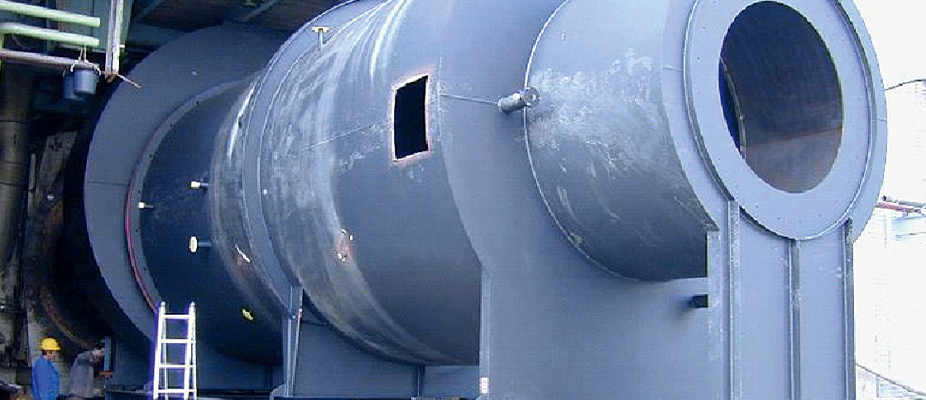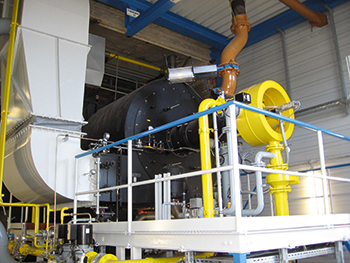Drying processes - Pulverized fuels and biogas for drying sugar beet cossettes
Jülich sugar factory (Germany)
Permissible firing with minimum operating costs
In times of uncertain heating markets, previously unused fuels become interesting, which can partially replace conventional standard fuels completely - with maximum availability and unbeatably low operating costs. The example of the Jülich sugar factory shows that pulverized coal can also be used safely in critical processes and that the investment costs are amortized in a very short time.
The plant used in Jülich is used to dry sugar beet cossettes, which only occur during a few weeks of the year, the so-called sugar beet campaign. In addition to the actual drying process with SAACKE dust burners SSB-D, harmful exhaust gases are thermally aftertreated so that all limit values of the TA Luft (German Technical Instructions on Air Quality Control) are safely met even under unfavorable conditions.
All advantages at a glance
- Considerable cost reduction
- Precise temperature control
- SNCR eliminates ammoniacal exhaust
- Limit values of TA Luft are safely undercut (NOx < 200 mg/m³)
- High availability and robust technology
- Lowest fuel costs
- Wide control range
- Alternative fuel: Biogas
- Especially short project time of only 7 months
- Additionally: thermal utilization of waste gas containing ammonia
The SAACKE solution in detail
The core of the cossette drying system is formed by two independent high-temperature drying plants (HTT), whereby 80 % of the drying capacity is provided by one plant. The capacity of this plant corresponds to a capacity of 40 t water evaporation per hour. The second HTT covers peak loads and is started up when required. Both dryers must maintain a narrow temperature window and dry the beet cossettes at a temperature of 750 °C. This precise temperature control not only protects the dried material, but also enables the parallel disposal of harmful exhaust gases. During further sugar production, ammonia-containing carbonation gases are produced, the emission values of which have been reduced in the current TA Luft (German Clean Air Act). Up to now, these exhaust gases have mostly been condensed or washed (acidic scrubbing absorption) and caused considerable costs with this process.
The Selective Non-Catalytic Reaction (SNCR) process implemented simultaneously with the new plant takes place while the dryer is running: precisely dosed, the ammonia-containing exhaust gas flows into the hot gas generator of the dryer and reacts continuously with the nitrogen oxides of the burner exhaust gas to form molecular nitrogen and water. This reaction proceeds stably within a temperature window of 900 - 1 100 °C and reduces the emission values for NOx and ammonia to well below the low limit values.
Furthermore, the previous disposal costs for the reaction products are completely eliminated. The precise volume control of the ammonia-containing exhaust gases into the hot gas generator allows additional adjustment of the dryer temperature so that the temperature of maximum 750 °C can be precisely maintained.
SSB-D: robust and versatile
The main firing of both dryers consists of adapted SAACKE SSBG-D swirl burners. These burners, with a capacity of 40 MW each, burn pulverized lignite and are based on the proven combustion technology for the industrial and power plant sector. The robust construction is suitable for all fuels and generates a wide, short flame, which can be adapted to any combustion chamber geometry.
Due to the highly twisted main air, the flame is particularly stable and offers a wide control range. Compared to the previously used heavy oil firing system, the burn-out of the installed burners is exceptionally high at over 99.5 % and considerably extends the maintenance intervals of the plant. The SSBG-Ds adapted for Jülich offer another advantage: they can also be operated with biogas from an existing biogas plant as an alternative. The plant in Jülich was designed, assembled on site and commissioned within only 7 months. Production was resumed without any problems and without test operation.
The conversion of the combustion system to pulverized lignite has a number of operational advantages in addition to the security of supply, low price and easy storage in an inert silo. This solution is characterized by long maintenance intervals and high availability. The simultaneous aftertreatment of ammonia-containing waste gas is a classic win-win situation. It relieves both budget and environment.
MORE INDUSTRY REFERENCES
- Plant modernization - Conversion from mixed firing to natural gas in specialty chemicals
- Alternative Fuels - Lean gas
- Alternative Fuels – Molasses combustion in Brazil
- Water tube boilers - Modernization of a refinery in Bulgaria
- Shell boilers - Combined heat and power system incl. gas turbine exhaust gas burner and control technology for food production
- Burner / Steam pressure atomizer - Equipment of a district heating plant near Vienna with burners for low NOx emission and flexible operation
© SAACKE GmbH 2024



